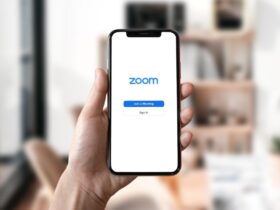Want to increase your search rankings and click-through rates by 50%?
You know you need to write content titles that people will click, but most writers are creating dull, forgettable titles that get buried in the noise while their competitors steal all the clicks.
Here’s the problem…
Your title is the first thing people see in search results. If it doesn’t stand out, you might as well not exist. And with 67% of businesses using AI for content optimization right now, the competition is getting tougher than ever.
But here’s the secret…
You can dramatically improve your search performance with the right title optimization techniques. In this step-by-step guide, you’ll find exactly how to craft titles that search engines love and people can’t resist clicking on.
By the end of this post, you’ll know the science of high-converting titles, the secret of title length optimization, psychology-driven title formulas, and the biggest title mistakes that are killing your rankings.
Let’s get started!
What you’ll discover:
- The Science Behind High-Converting Titles
- Title Length Optimization Secrets
- Psychology-Driven Title Formulas
- Common Title Mistakes That Kill Rankings
The Science Behind High-Converting Titles
Want to know what separates winning titles from the duds?
Research analyzing 4 million search results showed that titles optimized with the right techniques have an 8.9% higher click-through rate than those that are poorly optimized.
That might not sound like much, but the difference between 1,000 visitors and 1,089 visitors per month adds up to an extra 1,068 visitors a year — for free.
Here’s how it works:
The most effective titles hit both logical and emotional triggers. They promise value and create curiosity. According to Cardiff SEO experts striking this balance between logic and emotion is the cornerstone of title optimization — too much of either, and your click-through rates suffer.
It’s simple when you think about it…
Which title would you click on? “Content Marketing Tips” or “7 Content Marketing Secrets That Doubled My Traffic in 30 Days”?
The second one wins because it’s specific, promises a clear outcome, and creates a sense of urgency.
Writers who want to create compelling titles faster can turn to AI tools like a book title generator. You can visit squibler.io to see how AI can help speed up your title creation process and spark new ideas. But don’t stop there. The psychology of what makes titles work is what separates good content creators from the traffic-driving machines.
Title Length Optimization Secrets
Here’s something that most people get wrong…
They assume longer titles are better because they can pack in more keywords and information. That’s not the case.
Titles between 40-60 characters have an 8.9% higher click-through rate than shorter or longer titles. Why? Because they fit perfectly in the search results and don’t get cut off.
Google truncates long titles with “…” which makes them look unfinished and unprofessional.
But here’s the kicker…
It’s not just about length. It’s about making every character count.
Your title needs to:
- Include your main keyword
- Promise a clear benefit
- Create curiosity or urgency
- Stay under 60 characters
For example, instead of “Ultimate Guide to Content Marketing Strategies That Work in 2024 and Beyond” (82 characters), try “7 Content Marketing Strategies That Work in 2024” (47 characters)
The shorter version is punchy, specific, and won’t get truncated.
The Sweet Spot Formula
The best-performing titles follow this formula:
Number + Adjective + Keyword + Promise
- “5 Simple SEO Tips That Boost Rankings“
- “7 Proven Email Templates That Convert”
- “3 Advanced Strategies That Double Traffic”
This formula works because it sets clear expectations and promises specific value.
Psychology-Driven Title Formulas
Want to tap into the psychology behind what makes people click?
Here are the formulas that consistently outperform everything else:
The Curiosity Gap
Create a gap between what people know and what they want to know.
- “The SEO Secret Nobody Talks About”
- “Why 90% of Content Fails (And How to Fix It)”
The Social Proof Formula
Use numbers and results to build credibility.
- “How 10,000+ Marketers Boost Their Rankings”
- “Why 87% of Top Bloggers Use This Method”
The Problem-Solution Bridge
Identify a pain point and promise relief.
- “Struggling With Low Traffic? Try This”
- “Blog Not Converting? Fix This First”
Keyword Placement Strategies
This is the one place most people screw up their titles…
Either stuffing the keyword unnaturally or completely forgetting to include it. Both ways hurt your rankings.
The right way to include your keyword:
Place your main keyword as close to the beginning as possible, but keep it flowing naturally. Search engines weight words at the start of titles more heavily.
Good examples:
- “AI Book Title Generator: 7 Tools That Work”
- “Content Optimization: The Complete Guide”
- “SEO Rankings: How to Boost Yours in 2024”
Bad examples:
- “How to Use an AI Book Title Generator Tool for Better Content”
- “The Ultimate Guide to Using AI Book Title Generators”
Testing and Optimization
How do you know if your titles are actually working?
You have to test them. Successful content creators do it this way:
A/B Test Your Titles
Create multiple versions and run them side by side:
- Version A: “10 SEO Tips for Beginners”
- Version B: “SEO Tips That Actually Work (Beginner’s Guide)”
Run each for a few weeks and track click-through rates with Google Search Console.
Watch These Metrics
- Click-through rate – The % of people who click your title
- Time on page – How long people stay after clicking
- Bounce rate – How many leave immediately
Continuous Improvement
The best titles often come from iteration. Start with your best guess then refine based on data.
If a title gets good clicks but high bounce rates, the content probably doesn’t match the promise. If clicks are low but engagement is high, the title is likely too conservative.
Common Title Mistakes That Kill Rankings
Avoid these title killers that destroy your search performance:
Mistake #1: Being Too Vague
“Marketing Tips” tells people nothing. “5 Email Marketing Tips That Boost Opens 40%” is specific and compelling.
Mistake #2: Keyword Stuffing
“Best AI Book Title Generator Tools for AI Book Title Generation” sounds robotic and spammy.
Mistake #3: Clickbait Without Delivery
“This One Trick Will Change Everything” better deliver something amazing or people will bounce immediately.
Mistake #4: Ignoring Search Intent
If people search for “how to,” don’t use a “what is” title format. Match the intent.
Advanced Title Optimization Tactics
Ready to take your titles to the next level?
Here are some advanced strategies most content creators never use:
Use Power Words
Certain words trigger stronger emotional responses:
- Urgency: Now, Today, Instant, Immediately
- Authority: Proven, Expert, Professional, Advanced
- Benefit: Free, Easy, Simple, Quick
Add Year for Freshness
Including the current year in your title signals your content is up-to-date:
- “SEO Guide 2024”
- “Content Marketing Trends for 2024”
Wrapping Things Up
Optimizing content titles is a little art and science.
It’s about understanding your audience, matching search intent, and creating irresistible promises that your content can deliver.
The most successful content creators treat titles as marketing copy, not an afterthought. They test different approaches, analyze performance data, and continuously refine their techniques.
Remember these key principles:
- Keep titles 40-60 characters long
- Include your main keyword naturally
- Create curiosity while promising value
- Test different approaches and optimize based on data
- Match the search intent behind your target keywords
Start implementing these strategies today, and you’ll see your click-through rates start to climb while your competitors scratch their heads wondering what you’re doing differently.












































Leave a Reply